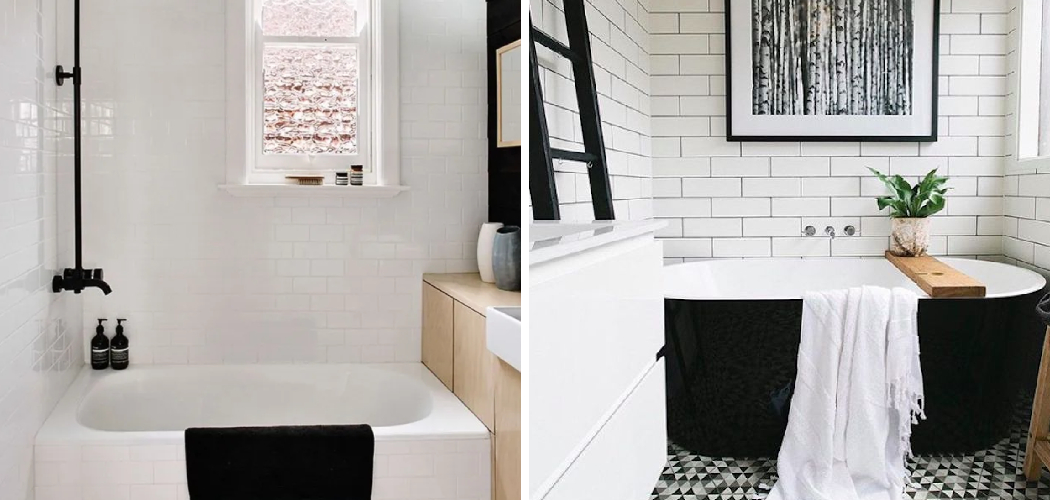Is your current bathroom so small that you worry a standard-sized bathtub might never fit? Don’t give up hope! If you’ve ever tried to add a bathtub into a small bathroom, you know that it can be a major challenge. There are plenty of clever ways to get a beautiful bathtub into even the tightest of spaces.
With a few DIY tricks and creative thinking, you can make your dream of having an in-home spa come true – no matter how tiny your bathroom may be.
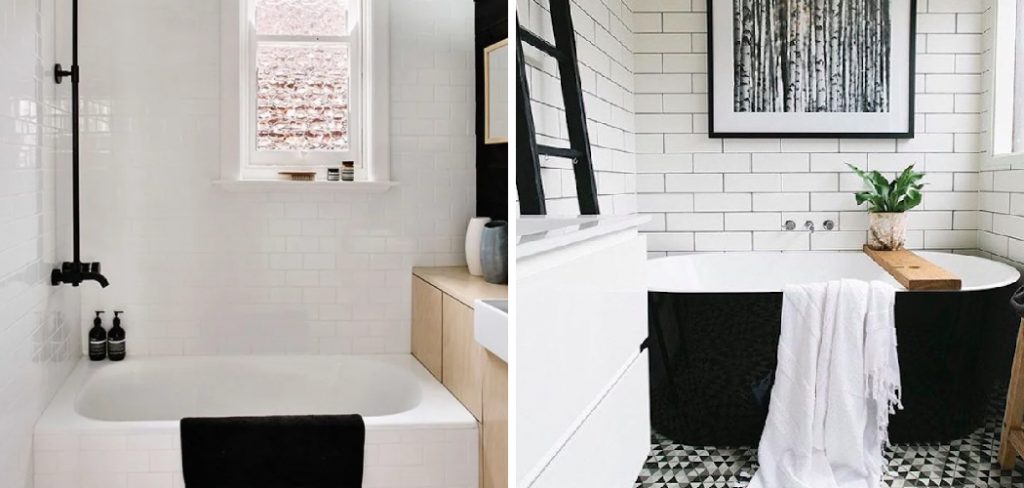
Fortunately, with innovative planning and creative problem-solving, homeowners are able to find ways to install even the most elaborate bathtubs in any size bathroom. In this blog post, we’ll cover tips and techniques on maneuvering a tub into any space, as well as provide ideas on how to get a bathtub into a small bathroom for using it to decorate other items like bookshelves or dressers.
Get ready to have your ultimate cozy oasis with these amazing hacks on how to get a bathtub into even the smallest of bathrooms.
Choosing the Bathtub for a Small Bathroom
1. Decide on Type
The first step to getting a bathtub into a small bathroom is deciding which type of tub is best suited for the space. To make sure that you find the perfect fit, consider both size and shape when selecting your new tub. For extremely tight spaces, corner tubs are an excellent choice since they can be tucked away in one of the walls, saving valuable floor space.
Alternatively, if you have a bit more room to work with, consider an alcove tub, as it can be placed up against the wall and is easy to access.
2. Measure Your Bathroom
Taking accurate measurements of your bathroom will help you determine which type of bathtub is best suited for your space. Measure the width, height, and depth of the area you’re considering installing a bathtub in, as well as any nearby fixtures like toilets, sinks, and vanities. Once you’ve taken these measurements, it is easier to find a tub that will fit perfectly.
3. Choose Materials Wisely
When shopping for a bathtub for a small bathroom, it is important to pay attention to the materials being used. It’s best to opt for lightweight models that don’t require additional support, such as steel or acrylic tubs. This will help you save space and ensure that your bathtub fits easily into your bathroom.
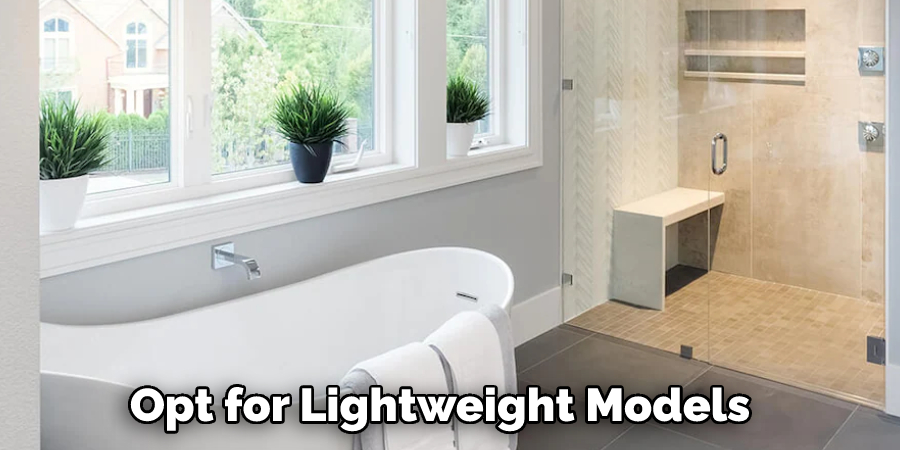
Things to Consider Before Starting the Project
1. Size and Weight of Tub
One of the most important things to consider before installing a bathtub in a small bathroom is size and weight. Smaller, more lightweight tubs that don’t require additional support are best for tighter spaces. Make sure to measure your bathroom beforehand so you can find one that fits perfectly.
2. Access to Electrical and Plumbing
When installing a bathtub in a small bathroom, it is important to have access to the electrical and plumbing systems. If these are not accessible, you will need to hire a professional to run the necessary wiring and plumbing for your tub.
3. Flooring
If you plan on putting your new tub in a small bathroom, consider the type of flooring you have. If possible, use tiles that are slip-resistant and easy to clean to prevent any accidents or slips while using your tub.
Required Items
Before attempting to move a bathtub into a small bathroom, it is important to be sure that you have all the right items. These include:
- Bathtub
- Screws for securing the bathtub
- Level tool
- Tub drain fitting (if necessary)
- Screwdrivers and
- Adjustable wrenches
10 Instructions on How to Get a Bathtub Into a Small Bathroom
1. Measurement
Measure the size of both the bathtub and the bathroom to make sure they will fit together properly. This is a very important step, as it can help you determine where you’ll need to place objects like the drain fitting.
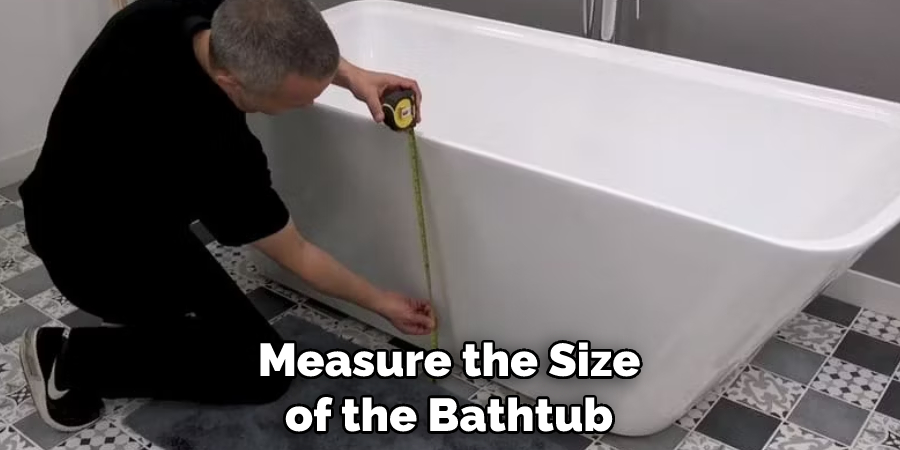
2. Mark
Mark off areas in the bathroom that may need to be cut or removed for installation. This includes any fixtures that may be in the way or anything else that could interfere with the installation.
3. Remove Obstacles
Remove any obstacles from the area where you will be placing the bathtub, such as furniture or other items. Removing these obstacles will make it easier to maneuver the bathtub.
4. Position the Tub
Position your bathtub in the desired location, and use your level tool to ensure that it is even. If necessary, you can adjust the tub’s position by loosening or tightening the screws. Positioning the tub in the proper location is important for its installation.
5. Connect the Drain
Connect the drain fitting to your bathtub and tighten it securely with a screwdriver or adjustable wrench. This will ensure that there are no leaks when water is filled into the bathtub.
6. Secure
Secure the bathtub to the floor or wall with screws and a screwdriver. This will provide extra stability and help keep the tub in place once installed. Bathtub installation kits may also include extra pieces for additional support.
7. Maintain Regulation
Connect the tub drain to the plumbing system according to local codes and regulations. This step is necessary to ensure that your bathtub will work properly after installation. The tub is now ready to be filled with water.
8. Check for Leaks
Check the area around your bathtub for any leaks or damage. Ensure that everything is tightly sealed and securely connected before moving on to the next step. The area should be clean and free of any debris.
9. Cover Up
Cover up any exposed plumbing with caulk or grout to prevent leaks or water damage in the future. This step is particularly important for small bathrooms, as even a small leak can cause serious damage over time.
10. Test
Test your bathtub by slowly filling it with water and draining it several times. This will help you identify any issues before the tub is fully filled and put to use.
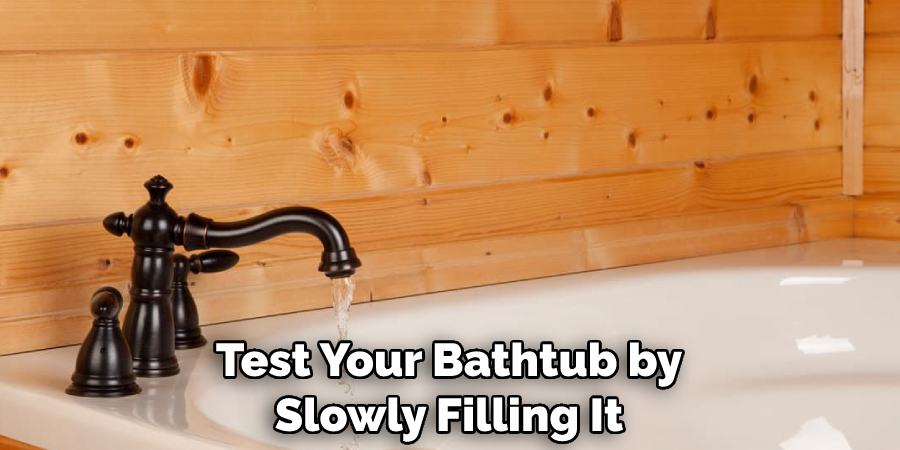
Once these 10 steps have been completed, you have successfully installed a bathtub in your small bathroom!
7 Safety Precautions to Follow When Moving a Bathtub into a Small Bathroom
When you need to get a bathtub into your small bathroom, safety should be the primary concern. To ensure everyone’s safety when moving the tub, here are 8 safety precautions to follow:
1. Make sure that all floors and pathways are clear of obstacles or debris before beginning the move. Floor space should be free of any furniture, rugs, or other objects that can create an obstacle.
2. Wear protective gear like gloves and safety glasses to protect yourself from potential injury while moving the bathtub. Protective gear is especially important if you are using tools to cut or break apart the tub.
3. Secure any items that may be loose such as shower heads, faucets, and pipes that need to be moved with the bathtub. Make sure these items are secured tightly and will not move while in transit.
4. Have at least two people carry the bathtub. It is important to have good balance and weight distribution when carrying something heavy, like a bathtub, so having more than one person will help distribute the weight evenly.
5. Use proper lifting techniques while moving the tub into place. Make sure you are in a proper position with your back straight and legs bent and that you are using your legs to lift the tub rather than relying solely on your back or arms.
6. Take breaks as needed. Moving something heavy like a bathtub can be physically exhausting, so don’t overdo it! If you need to take a break for any reason, make sure someone is still delegated to hold the tub in place.
7. Be mindful of any sharp edges or corners on the bathtub that could potentially cause harm to you, your property, or anyone helping with the move.
Following these safety precautions will ensure that everyone involved in the moving process is safe and that your new bathtub is ready for use as soon as possible!
Frequently Asked Questions
How Long Will It Take to Finish the Project?
The exact timeline will depend on the size of your bathroom and the number of people helping with the project. Generally, it can take anywhere from a few hours to a full day or more to get the bathtub into place. If you have any special considerations, such as limited space or access points, this could also affect how long it takes.
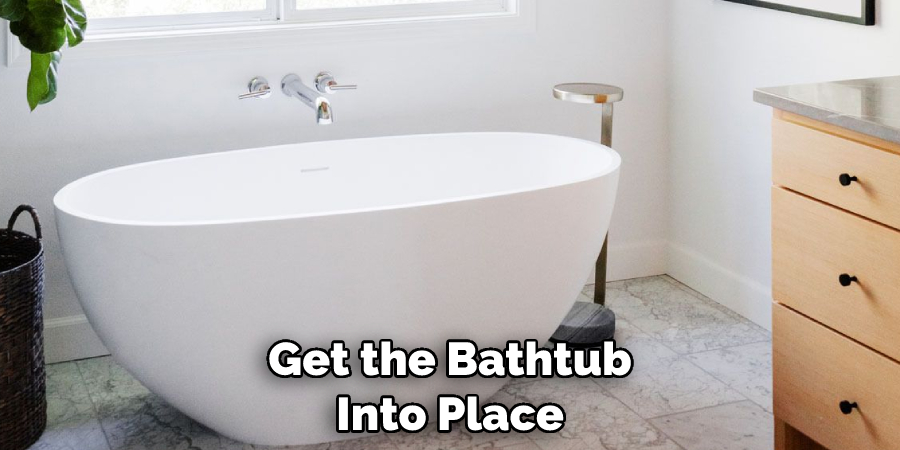
What Is the Best Way to Lift and Move a Bathtub?
The best way to lift and move a bathtub is with help from at least two people. When lifting, it’s important to keep your legs slightly bent and maintain good posture with your back straight. You should also use gloves to protect your hands from any sharp edges. If possible, it’s also a good idea to use lifting straps or rope loops attached to the bathtub.
Conclusion
Getting a bathtub into your small, cramped bathroom is no easy feat. But with the right planning of how to get a bathtub into a small bathroom and logistics, even the most challenging space can successfully accommodate a bathtub installation.
Just remember to accurately measure out the space, think twice before demolishing any walls, and pick up whatever special lifting equipment you may need. With the right kind of effort, you can have a comfy and beautiful bathtub set-up in no time.
And don’t forget to make sure all safety measures are taken when carrying out this work! Plus, if you really want to give it that extra personal touch, why not try adding some custom DIY crafts around the area?
Something as simple as a homemade wall hanging can go a long way in creating an intimate atmosphere for your bathroom oasis – so be sure to get creative as you make your dream bathroom come true!

